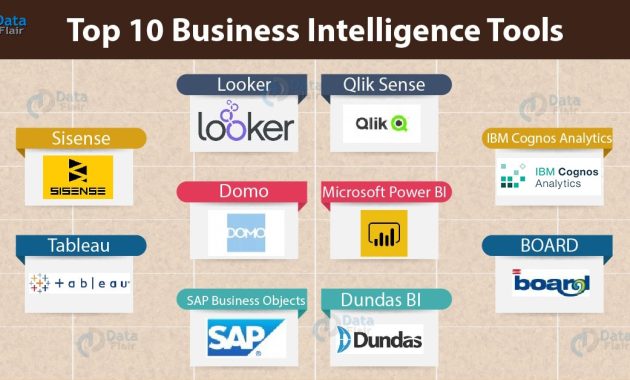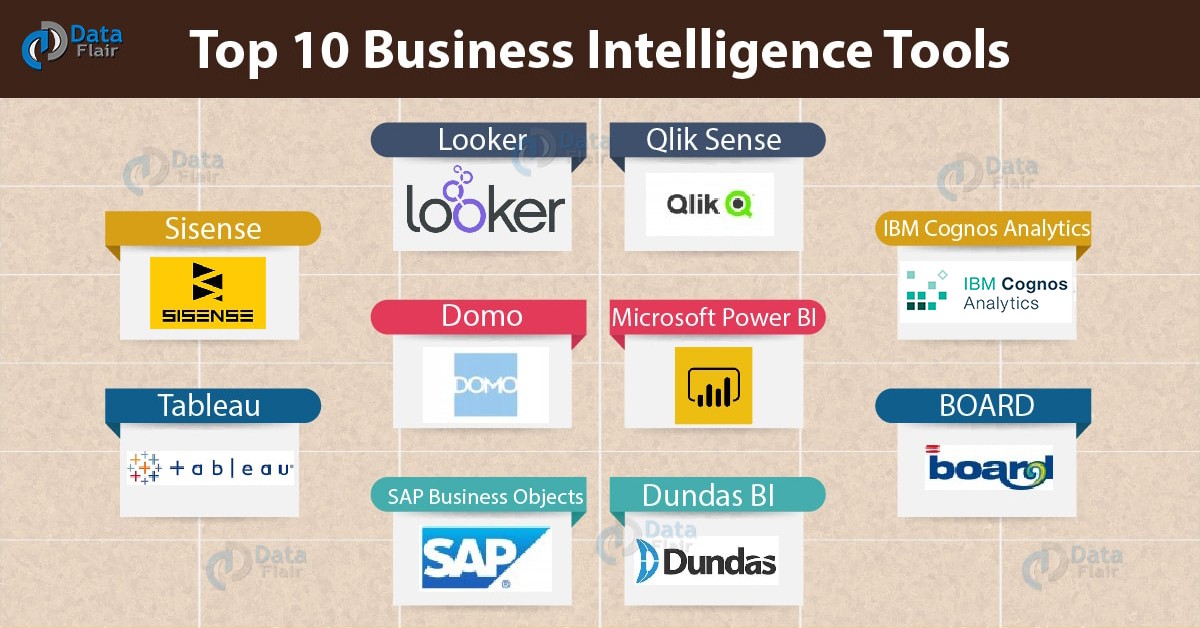
Beginner’s Guide to 7 Business Intelligence Tools You Can’t Ignore
In today’s data-driven world, businesses are drowning in information. The ability to extract actionable insights from this deluge is crucial for success. That’s where business intelligence (BI) tools come in. They transform raw data into understandable reports, dashboards, and visualizations. This empowers informed decision-making. This beginner’s guide will explore seven essential business intelligence tools. These tools are crucial for any organization seeking a competitive edge. We will cover what they are, and why they are important. We will also look at how they can be utilized.
Understanding the Importance of Business Intelligence
Before diving into the tools, it’s important to grasp the core value of business intelligence. BI is more than just fancy charts and graphs. It’s a strategic approach to analyzing data to improve business performance. By using these tools, businesses can identify trends, pinpoint inefficiencies, and predict future outcomes. This leads to better resource allocation, improved customer satisfaction, and increased profitability. Ignoring business intelligence is like navigating a ship without a compass. It leaves businesses vulnerable to market changes and competitive pressures.
Tool 1: Microsoft Power BI
Microsoft Power BI is a leading business intelligence tool. It is widely used due to its user-friendly interface and powerful capabilities. Power BI allows users to connect to various data sources. These include spreadsheets, databases, and cloud services. It offers a rich set of visualization options, including interactive dashboards and reports. This makes it easy to understand complex data. Power BI also integrates seamlessly with other Microsoft products, making it a natural choice for many organizations. It is a great business intelligence tool for beginners.
Key Features of Power BI:
- Data connectivity: Connects to a vast array of data sources.
- Data visualization: Creates interactive dashboards and reports.
- Data transformation: Cleans and transforms data within the tool.
- Collaboration: Enables sharing and collaboration on reports.
- Cost-Effectiveness: Offers both free and paid versions.
Tool 2: Tableau
Tableau is another industry-leading business intelligence tool. It is known for its intuitive interface and powerful data visualization capabilities. Tableau’s drag-and-drop functionality makes it easy for users to create insightful dashboards. It also offers advanced analytics features, such as predictive modeling. Tableau is particularly well-suited for businesses that need to create visually appealing and interactive reports. This makes it a great choice for presenting data to stakeholders. Many companies use Tableau as their primary business intelligence tool.
Key Features of Tableau:
- Data visualization: Exceptional visual analytics capabilities.
- Interactive dashboards: Create highly interactive reports.
- Data blending: Combines data from multiple sources.
- Data exploration: Provides powerful data exploration tools.
- Scalability: Suitable for businesses of all sizes.
Tool 3: Qlik Sense
Qlik Sense is a business intelligence tool that focuses on data discovery and self-service analytics. It uses an associative engine. This engine allows users to explore data in a more intuitive way. Qlik Sense automatically identifies relationships within the data. This helps users uncover hidden insights. It also offers a range of visualization options and collaboration features. This makes it easy to share findings with others. Qlik Sense is a great business intelligence tool for data exploration.
Key Features of Qlik Sense:
- Associative engine: Facilitates data discovery.
- Self-service analytics: Empowers users to analyze data.
- Data visualization: Provides a variety of visualization options.
- Collaboration: Enables sharing and collaboration.
- Mobile access: Allows access to reports on mobile devices.
Tool 4: IBM Cognos Analytics
IBM Cognos Analytics is a comprehensive business intelligence tool. It is designed for enterprise-level deployments. Cognos offers a wide range of features, including reporting, dashboards, and advanced analytics. It also provides strong governance and security features. This makes it suitable for organizations with complex data requirements. IBM Cognos Analytics is a robust business intelligence tool.
Key Features of IBM Cognos Analytics:
- Reporting: Comprehensive reporting capabilities.
- Dashboards: Create interactive dashboards.
- Advanced analytics: Offers advanced analytical features.
- Governance: Provides strong governance and security.
- Scalability: Designed for enterprise-level deployments.
Tool 5: SAP Analytics Cloud
SAP Analytics Cloud is a cloud-based business intelligence tool. It is designed to integrate seamlessly with other SAP solutions. SAP Analytics Cloud offers a range of features, including planning, predictive analytics, and business intelligence. It is a good choice for businesses already invested in the SAP ecosystem. It simplifies data analysis and reporting. SAP Analytics Cloud is a modern business intelligence tool.
Key Features of SAP Analytics Cloud:
- Cloud-based: Accessible from anywhere.
- Integration: Seamlessly integrates with SAP solutions.
- Planning: Offers planning and forecasting capabilities.
- Predictive analytics: Provides predictive analytics features.
- Collaboration: Enables collaboration on reports and dashboards.
Tool 6: Sisense
Sisense is a business intelligence tool that focuses on ease of use and speed. It is designed to handle large and complex datasets. Sisense offers a drag-and-drop interface. This interface makes it easy to create dashboards and reports. It also provides a wide range of data connectors. This makes it easy to connect to various data sources. Sisense is known for its fast performance and user-friendly design. It is a great business intelligence tool for speed.
Key Features of Sisense:
- Ease of use: User-friendly interface.
- Speed: Fast performance.
- Data connectors: Wide range of data connectors.
- Scalability: Handles large datasets.
- Embedded analytics: Allows for embedding analytics into applications.
Tool 7: Domo
Domo is a cloud-based business intelligence tool. It is designed for collaboration and real-time data analysis. Domo offers a range of features, including data integration, visualization, and mobile access. It also provides a collaborative workspace. This workspace makes it easy for teams to share insights. Domo is a good choice for businesses that need to make data-driven decisions quickly. It is a modern business intelligence tool.
Key Features of Domo:
- Cloud-based: Accessible from anywhere.
- Real-time data: Real-time data analysis.
- Collaboration: Collaborative workspace.
- Mobile access: Mobile access to reports and dashboards.
- Data integration: Provides a wide range of data connectors.
Choosing the Right Business Intelligence Tool
Selecting the right business intelligence tool depends on several factors. These include your specific business needs, budget, and technical expertise. Consider the following factors:
- Data Sources: What data sources do you need to connect to?
- Features: What features are essential for your business?
- User Interface: Is the tool user-friendly?
- Scalability: Can the tool handle your future data growth?
- Budget: What is your budget for the tool?
By carefully considering these factors, you can choose the business intelligence tool that best suits your needs. The right tool will empower you to make data-driven decisions.
Conclusion
Business intelligence tools are essential for businesses. They help businesses unlock the power of their data. This beginner’s guide has explored seven powerful tools. These tools offer a range of features and capabilities. Each tool is designed to meet different business needs. By understanding these tools, you can make more informed decisions. You can also gain a competitive advantage. Start exploring these tools today. Transform your data into actionable insights. This will drive your business forward. [See also: Related Article Titles]

